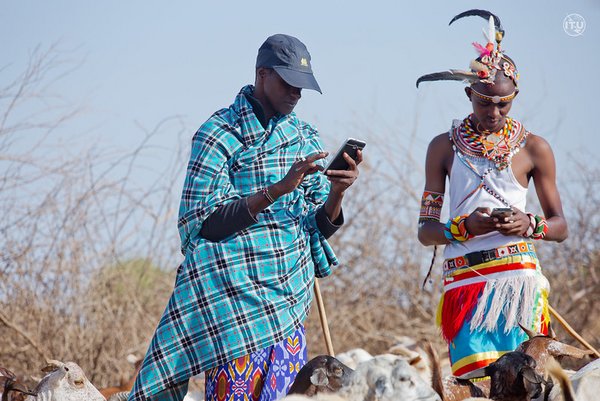 Read this article in French
Read this article in French- Share this article
- Subscribe to our newsletter
Nearly three billion people 'digitally excluded'
An estimated 37 per cent of the world's population – or 2.9 billion people – have still never used the Internet, according to latest data from the International Telecommunication Union (ITU) published in late November 2021. At the same time, the data reveals strong global growth in Internet use, with the estimated number of people who have used the Internet surging to 4.9 billion in 2021, from an estimated 4.1 billion in 2019.
Of the 2.9 billion still offline, it is reckoned that 96 per cent live in developing countries. And even among the 4.9 billion counted as 'Internet users', many hundreds of millions may only get the chance to go online infrequently, via shared devices, or using connectivity speeds that markedly limit the usefulness of their connection.
The unusually sharp rise in the number of people online suggests that measures taken during the pandemic – such as widespread lockdowns and school closures, combined with people's need for access to news, government services, health updates, e-commerce and online banking – contributed to a 'COVID connectivity boost' that has brought an estimated 782 million additional people online since 2019, an increase of 17 per cent.
Almost three quarters of people in LDCs don’t have Internet access
Strong growth since 2019 was largely driven by increases in developing countries, where Internet penetration climbed more than 13 per cent. In the 46 UN-designated Least Developed Countries (LDCs), the average increase exceeded 20 per cent.
Gender gaps in Internet use remain, especially in LDCs. Globally, an average of 62 per cent of men use the Internet compared with 57 per cent of women, while in LDCs, 31 per cent of men use the Internet compared to just 19 per cent of women. In Landlocked Developing Countries, 38 per cent of men are Internet users compared to 27 per cent of women.
This gender divide remains particularly pronounced in Africa (35 per cent of men compared to 24 per cent of women) and the Arab States (68 per cent of men compared to 56 per cent of women).
People in rural areas are left behind
Globally, people in urban areas are twice as likely to use the Internet than those in rural areas. This also applies to developing countries, where 72 per cent of the urban population use the Internet compared to 34 per cent of the people living in rural areas. In the LDCs, urban dwellers are almost four times as likely to use the Internet as people living in rural areas (47 per cent urban compared to 13 per cent rural).
Many of these 'digitally excluded' face formidable challenges including poverty, illiteracy, limited access to electricity, and lack of digital skills and awareness.
Despite network availability, billions do not connect
ITU figures also point to a glaring gap between digital network availability versus actual connection. While 95 per cent of people in the world could theoretically access a 3G or 4G mobile broadband network, billions of them do not connect.
The affordability of devices and services remains a major barrier. The widely accepted target for affordable broadband connectivity in developing countries sets the cost of an entry-level mobile broadband package at two per cent of gross national income (GNI) per capita. Yet in some of the world's poorest nations, getting online can cost a staggering 20 per cent or more of per capita GNI.
Lack of digital skills and an appreciation of the benefits of an online connection is another bottleneck, compounded by a lack of content in local languages, as well as by interfaces which demand literacy and numeracy skills that many people do not possess.
(ITU/ile)
Read more at ITU website


